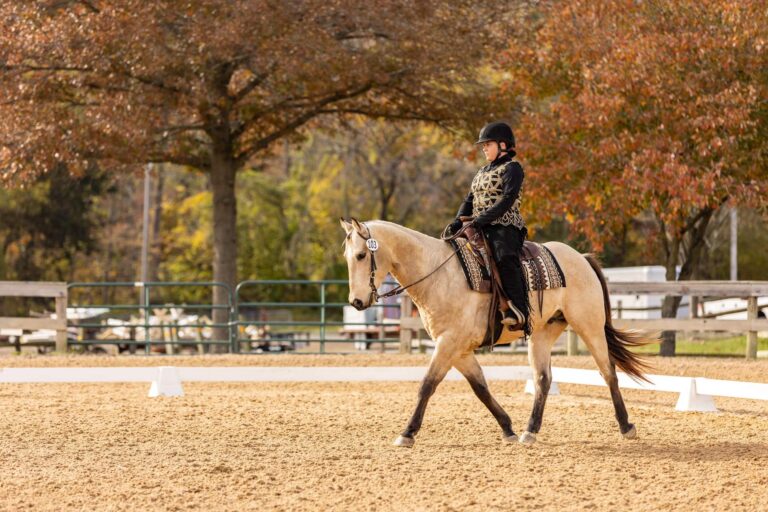The nearly 800 people who gathered for the Ingrid Klimke Masterclass in the Wine Country Dec. 2-3 left with oodles of conditioning, training and rider position points to apply at home.
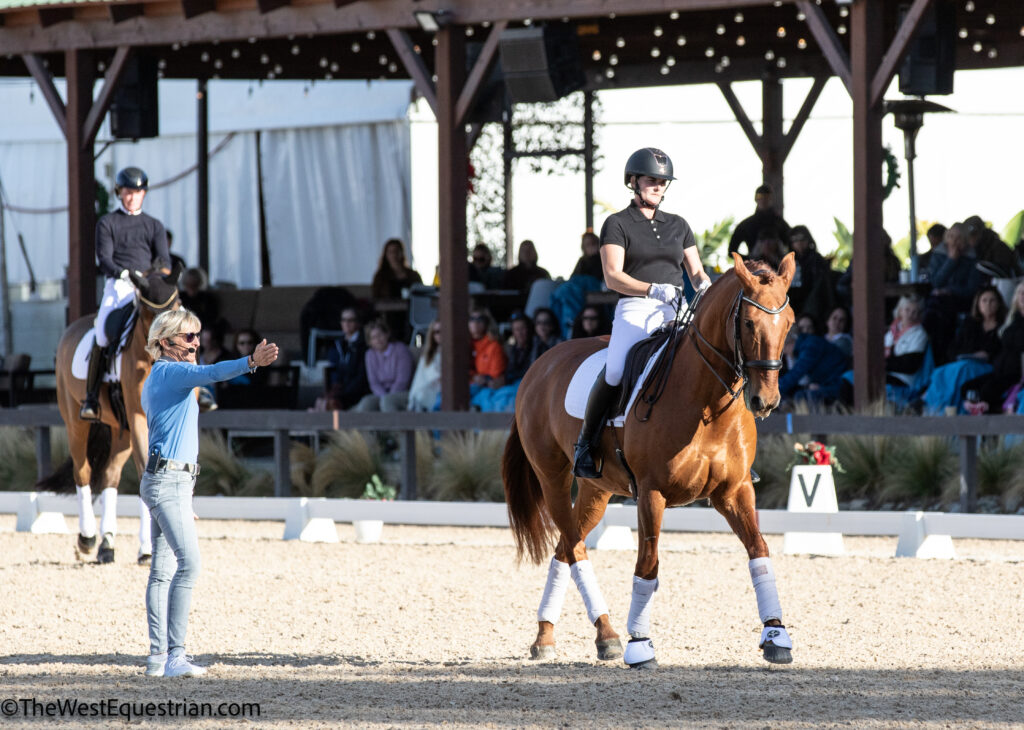
Ingrid’s passion for horses was the most tangible takeaway, especially as it factored into her approach to each of the 15 horse/rider pairs participating. The sunny weather at Southern California’s Galway Downs Equestrian was the perfect setting for the 5-time German Olympian’s positive messages.
Tailoring the work to each horse’s personality, abilities and brain is critical, Ingrid stressed throughout. “If you don’t get the answer you were looking for, figure out a way to ask the question differently.”
Clear communication in the aids and a pat or other acknowledgement of things done right were key. Minor disobediences, usually due to distractions, were to be ignored whenever feasible. Get the horse right back to the task at hand, Ingrid stressed.
Cavalletti For All
Cavalletti work is a foundation of Ingrid’s program with her dressage and eventing horses. And, it was central to every session of the Masterclass, too. Horses ranged from a 3-year-old stallion to a Grand Prix-poised dressage star, plus three eventers.
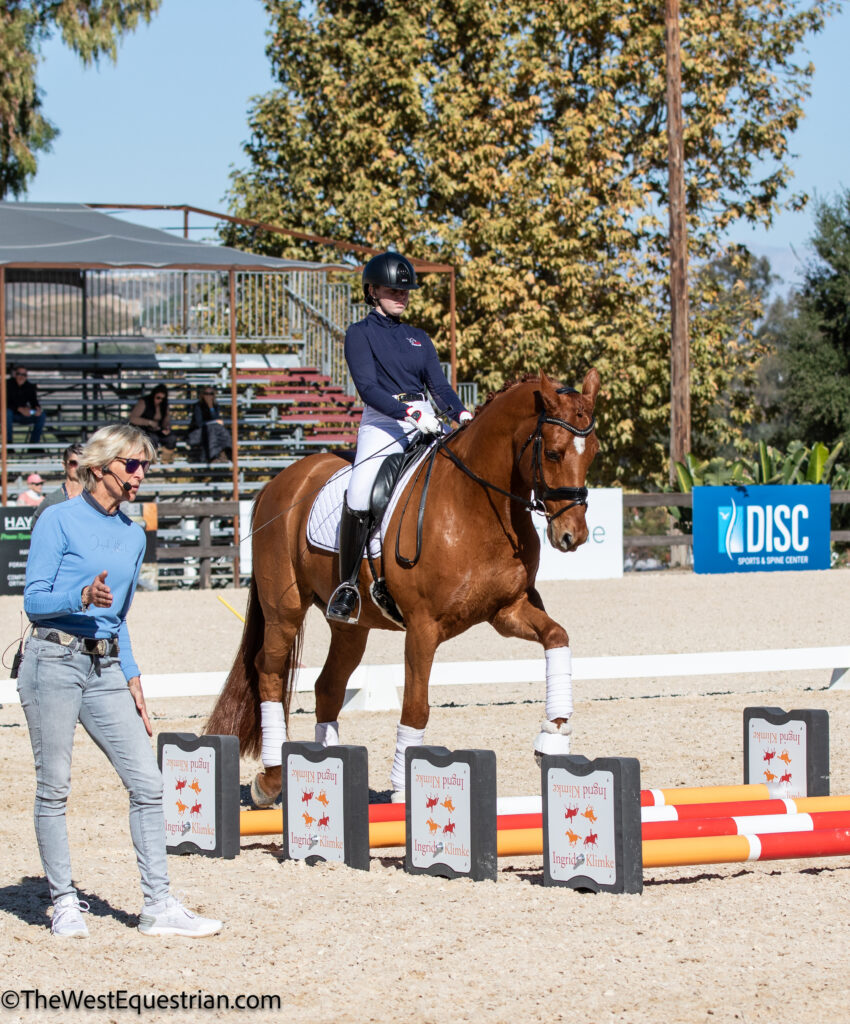
Viewing the horse/rider partnership as a 50/50 proposition was another key takeaway, and the cavalletti work often differentiated the horse’s and the rider’s job.
Approaching one or a set of Ingrid’s custom-made cavalletti, it was the rider’s job to have the right tempo for the task ahead and to position the horse on a straight track to and through the exercise. It was the horse’s job to size up the wooden poles, the distances between them and figure out the footwork needed to clear them.
There was plenty of pole clunking when cavalletti were introduced on day one. Ingrid explained that her custom-made cavalletti use wood poles for a reason. The horse knows when he hits a pole, typically motivating them to clear it the next time. And the weight keeps the cavalletti in place, whether they’re set in a straight line, on a circle or in a cross pattern.
No matter the clunking, it was never the rider’s job to try to fix it mid-exercise. They were to maintain a light, quiet seat, leg and hands as the horse figured things out for themselves.
Strength, Flexibility & Freedom
From a fitness and flexibility standpoint, the point of the cavalletti is to build strength, especially in the hindquarters and back, suppleness in the joints and freedom in the shoulder. No matter how long it took each horse to master the exercise, they all eventually increased the degrees of flexion in their knees and hocks.
Horses worked for varying lengths on each exercise. Some got the idea very quickly and were dismissed to work on suppleness exercises in other parts of the court to avoid boredom. Others needed more time and repetition. Whatever the timeline, “Horses want to learn and when they learn, they don’t want to get bored. If you have a quick thinker, a quick learner, you don’t want to go too long on one exercise.”
Keeping things interesting for the horse matters in each training session and throughout their days and weeks, Ingrid stressed. Daily walks in the woods, lunging over cavalletti and typically three days a week of training with a wide array of cavalletti patterns is a constant in her horses’ routines. Her dressage and eventing horses have quite similar programs, she noted.
As a system for strengthening the horse’s hind legs and back, cavalletti gymnastics are super useful in creating the step that starts every movement in a dressage test or successful jumping effort—the hindquarters sink down and propel the hind legs underneath the horse’s center of gravity.
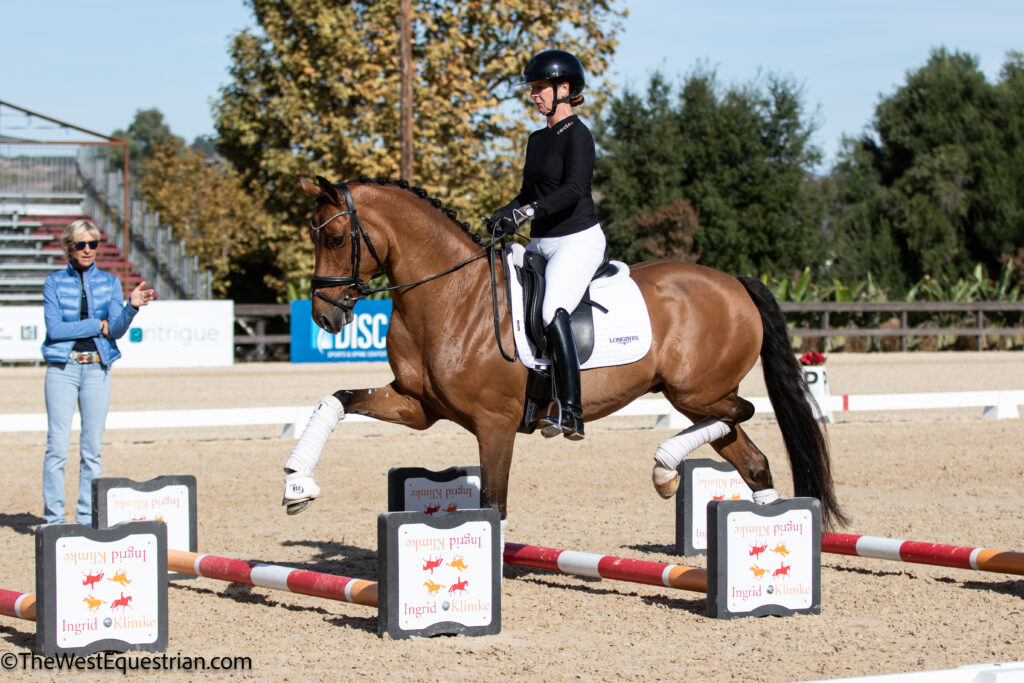
The strength developed in cavalletti exercises supports show ring success. More importantly, Ingrid emphasized, that strength is key to the horse staying fit and happy in its work over a hopefully long career. She spoke of competing her eventing partner, SAP Hale Bob, at 17 and the joy of feeling him “give me his whole heart all the time.”
Cavalletti work is a horsemanship gem Ingrid inherited from her father, the late eventing and dressage master Reiner Klimke. Their book, Cavalletti for Jumping and Dressage, is now in its fourth edition and attendees queued each day for Ingrid to cheerfully sign their copies and pose for photos.
Positive Forward
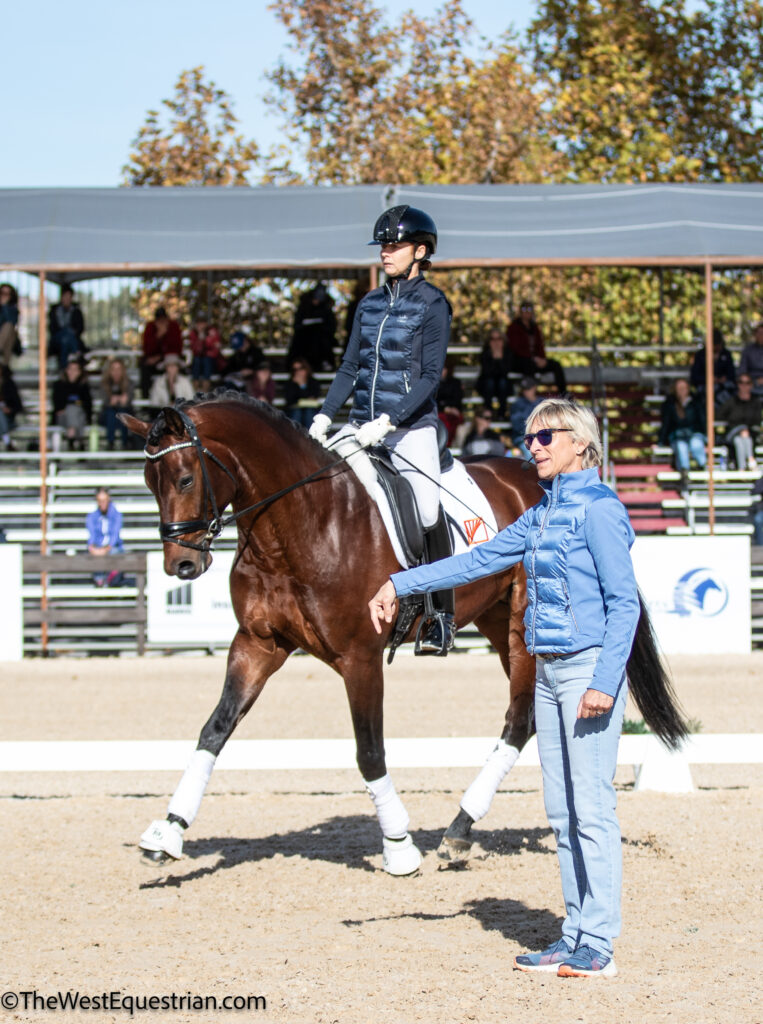
The “positive forward, positive forward” that Ingrid encouraged in all gaits is only possible with an engaged hind end providing the push and impulsion. When that happens, the horse is positioned to do another of his key jobs—maintaining self-carriage. It’s not the rider’s job to carry the weight of the horse’s head in their hands. “Carry only the weight of the reins,” Ingrid explained. Use the seat and leg to maintain hindquarter engagement.
Half-halts are another ever-present tool in Ingrid’s method. She uses them to set-up any transition, between and within gaits and changes of direction and bend. Learning how many are needed and developing precise timing for their execution is critical.
In addition to knowing the horse well, half-halt precision requires thinking six or seven seconds ahead of what’s coming. Anticipating a downward transition in the corner for example, Ingrid asks herself how many half-halts will be needed to ensure that it starts with sinking hindquarters, push and powerful forward step. She emphasized that the forward step should be thought of and ridden as part of the half-halt.
Organized by Entrigue Consulting, the Masterclass in the Wine Country gave all plenty of inspiration and one pressing question – When will Ingrid return?





